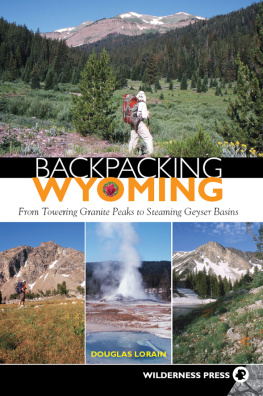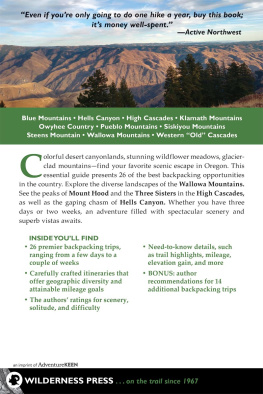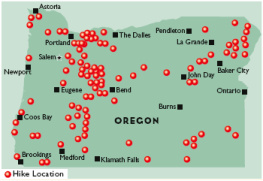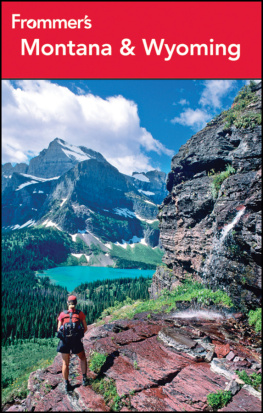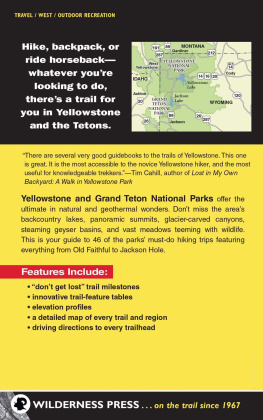

Backpacking Wyoming:
From Towering Granite Peaks to Steaming Geyser Basins
1st EDITION 2010
Copyright 2010 by Douglas Lorain
Front and back cover photos copyright 2010 by Douglas Lorain, except photo of paintbrush, which is copyright 2010 by Christine Ebrahimi
Interior photos, except where noted, by Douglas Lorain
Maps: Douglas Lorain
Cover and book design/layout: Larry B. Van Dyke
Book editor: Laura Shauger
ISBN 978-0-89997-505-4
Manufactured in the United States of America
| Published by: | Wilderness Press |
| 1345 8th Street |
| Berkeley, CA 94710 |
| (800) 443-7227; FAX (510) 558-1696 |
| info@wildernesspress.com |
| www.wildernesspress.com |
Visit our website for a complete listing of our books and for ordering information.
Distributed by Publishers Group West
Cover photos:
(front, top) Meadow above North Piney Lake, Wyoming Range (Trip 22)
| (bottom, from left) | Upper Paintbrush Canyon, Grand Teton National Park (Trip 12) |
| Shoshone Geyser Basin, Yellowstone National Park (Trip 4); |
| Rock Lake Peak, Salt River Range (Trip 23) |
| (back) | Grand and Middle Teton from below Avalanche Divide, Grand Teton National Park (Trip 12) |
| Previous page: | Warrior 1 and 2 and Warbonnet Peak over Lonesome Lake, Wind River Range (Trip 17) |
All rights reserved. No part of this book may be reproduced in any form, or by any means electronic, mechanical, recording, or otherwise, without written permission from the publisher, except for brief quotations used in reviews.
SAFETY NOTICE: Although Wilderness Press and the author have made every attempt to ensure that the information in this book is accurate at press time, they are not responsible for any loss, damage, injury, or inconvenience that may occur to anyone while using this book. You are responsible for your own safety and health while in the wilderness. The fact that a trail is described in this book does not mean that it will be safe for you. Be aware that trail conditions can change from day to day. Always check local conditions, know your own limitations, and consult a map.
I have a hunger for nonhuman spaces, not out of any distaste for humanity, but out of a need to experience my humanness the more vividly by confronting stretches of the earth that my kind has had no part in making.
Scott Russell Sanders,
The Paradise of Bombs
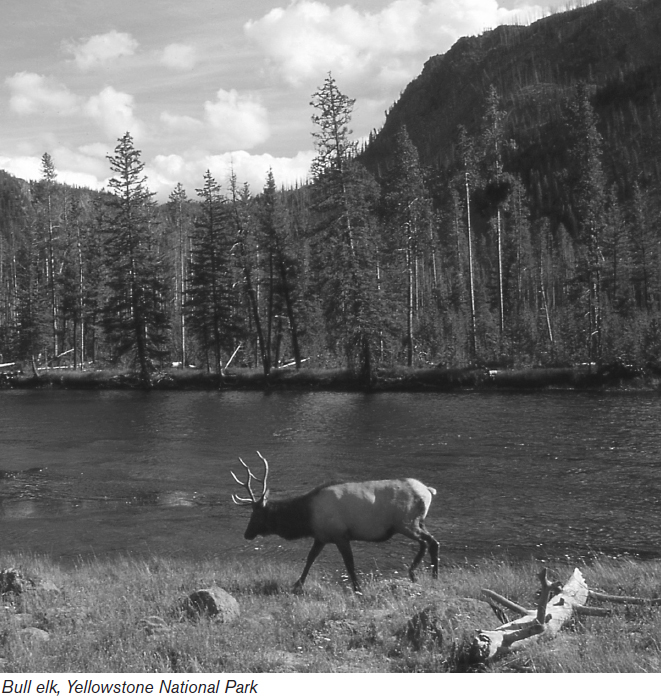
ACKNOWLEDGMENTS
The help of many people made this book possible. Special thanks go to the following persons:
My occasional hiking partnerDave Elsbernd.
Forest Service and Park Service personnel, who provided information, read drafts, or otherwise shared their considerable expertiseCraig Cope, Rob St. John, Sid Smith, Matt Walter, Paul Willard, and James Williams.
The people at Wilderness Press who continue to enthusiastically publish my books and do such a stellar job of turning my initial disjointed writing and mapping efforts into something useable and readable for you, the reader. On this book, particular thanks go to Roslyn Bullas, Laura Shauger, and Larry Van Dyke.
I also want to thank the nice people at Hot Springs County Memorial Hospital in Thermopolis, Wyoming, who helped me through a nasty bout of giardia I picked up in the Wyoming backcountry.
Most of all, forever and always, I thank my wife, Becky Lovejoy, who endured months alone having to take care of the dog and house while her husband traipsed off into the wilds in search of new trails. Her love and encouragement are invaluable to this book and to my life.
While the contributions and assistance of the persons listed above were invaluable, all of the text, maps, and photos herein are my own work and sole responsibility. Any and all omissions, errors, and just plain stupid mistakes are strictly mine.
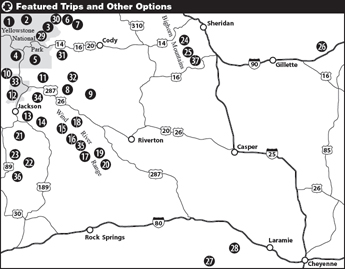
SUMMARY OF FEATURED TRIPS
TRIP NUMBER & NAME
BEST IN MAY & JUNE
BEST IN JULY
BEST IN AUGUST
BEST IN SEPTEMBER & OCTOBER
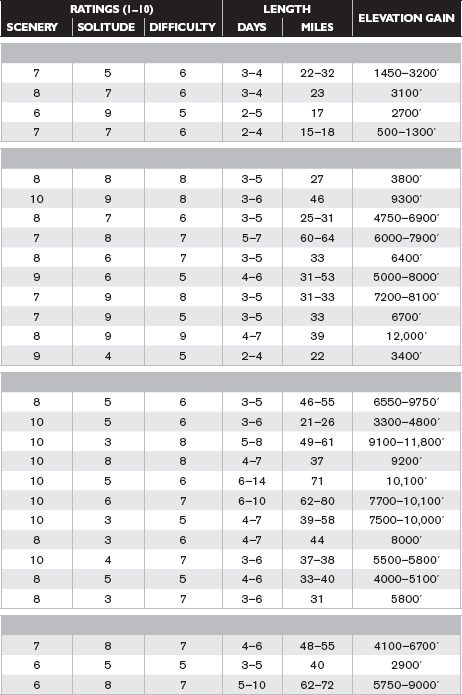
PREFACE
A uthors of guidebooks face a dilemma. Without dedicated supporters the wilderness would never be protected in the first place. The best, most enthusiastic advocates are those who have actually visited the land, often with the help of a guidebook. On the other hand, too many boots can also be destructive. It is the responsibility of every visitor to tread lightly on the land and to speak out strongly for its preservation.
Americans have long recognized the unique nature of Wyomings wild character and the value of protecting these resources for future generations. Consider the fact that this one state contains our countrys (and the worlds) first national park (Yellowstone), its first national monument (Devils Tower), and its first national forest (Shoshone). But while Wyoming has millions of acres of land that is now officially set aside in national parks or wilderness areas, the job of protecting Wyomings precious wildlands is far from complete. You are strongly encouraged to join in the efforts to protect more of the states ever-dwindling roadless terrain from the headlong push to drill, dig up, pave over, or otherwise destroy every piece of useless wilderness that remains. Not only must some areas be set aside for permanent protection, the remaining lands (the vast majority of the states acreage) needs to be managed in a more sustainable and environmentally friendly manner. One excellent grassroots organization working to achieve these ends is the ; you are strongly encouraged to join them in their efforts (see for contact information). But even land that is officially protected as wilderness needs continued citizen involvement. Issues like use restrictions, grazing rights, mining claims, and entry fees continue to present challenges. Remember that you own this land. Treat it with respect and get involved in its management.
To their credit, many of the agency officials who reviewed this material stressed the need for hikers to leave no trace of their visit. But especially in already crowded backcountry areas, the time has come for us to go beyond the well-known no trace principles and leave behind a landscape that not only shows no trace of our presence, but is in better shape than before we visited it. Here are some guidelines:

